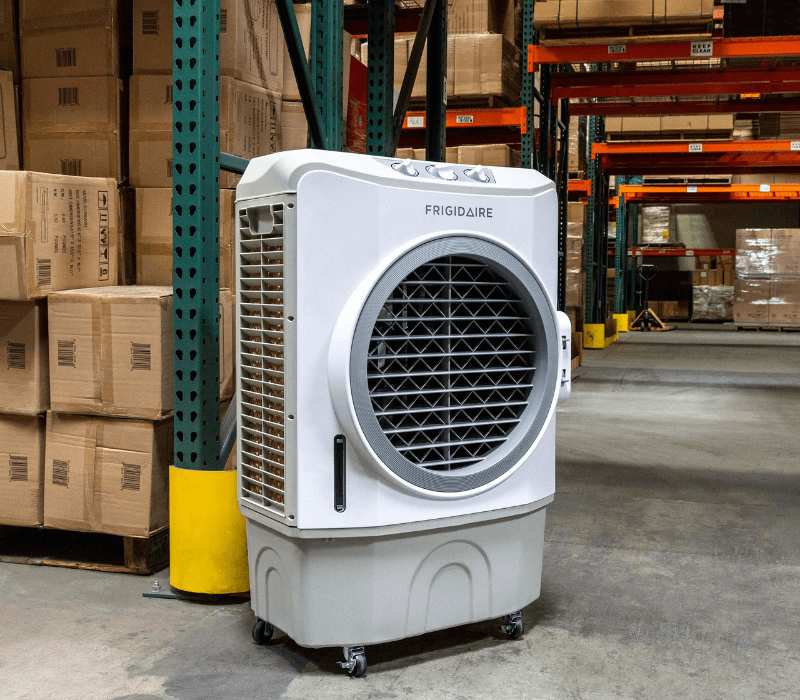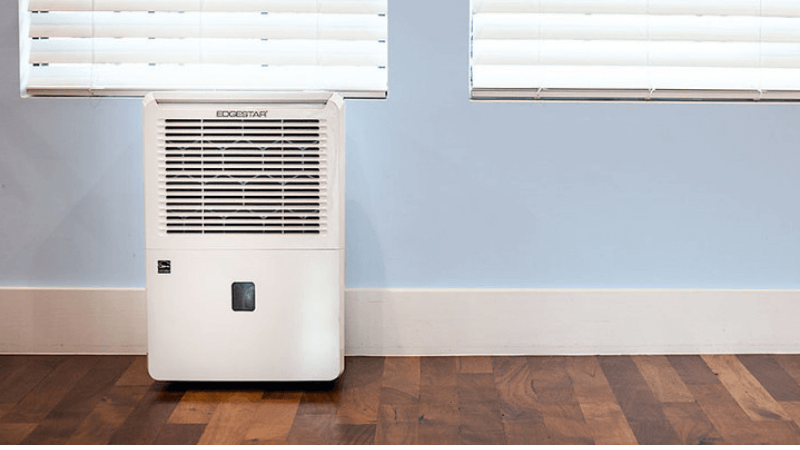Dehumidifiers are appliances that help reduce and maintain the air’s humidity level. By removing excess moisture in the air, dehumidifiers help keep common allergy triggers like mold and dust mites to a minimum and encourage a healthier environment.
In this post, I’ll show you if dehumidifiers cool or heat a room, how they work, why it feels cooler after using the dehumidifier, and much more. Enjoy.
[snippet]Does A Dehumidifier Cool or Heat a Room?
Dehumidifiers do not cool a room. Contrary to this, dehumidifiers technically add heat to a room. To understand this, first, let’s see how a dehumidifier works.
[/snippet]Dehumidifiers work the same way as air conditioners. First, the air is pulled from your home and passed through evaporator coils. Because evaporator coils are cooler, as humid air passes, they condense on the coils and are collected. Most dehumidifiers come with a tank that should be emptied regularly, while others use a drain hose or pump to empty collected condensate.
As humid air condenses on evaporator coils, heat is released. The difference between a dehumidifier and an air conditioner is that the air conditioner directs the heat generated outside. However, a dehumidifier does not bother with this, so the heat released goes back into the room. If a dehumidifier runs nonstop on those humid days, you should expect it to raise the temperature by a small amount.
Why the Room Feels Cooler After Using a Dehumidifier
Though dehumidifiers generate a little heat when working, once they start lowering the moisture level, your home can feel cooler than before. This is because the body’s cooling system works more efficiently as dry air is released back into the air. Through perspiration or sweating, the human body can cool off.
Sweating is not what cools you off but evaporates sweat from the body. For evaporation to occur, heat energy is needed to convert the sweat molecules into the air. As the sweat evaporates from the skin, it takes away the heat energy, which causes a cooling effect.
If the air is drier in your home, it will feel cooler because your body can cool itself naturally. In humid and hot conditions, evaporation is minimal, leaving you feeling sticky and just as hot because evaporation is not taking place. This is why dry heat is more comfortable to deal with than humid heat.
Evaporative Air Cooler Vs. Dehumidifier
An Evaporative air cooler, also called a swamp cooler, swamp box, or desert cooler, is a device that cools air through evaporation. It draws hot, dry air from a room and passes it through water absorbing/evaporative pads. The pads absorb heat from the air and release humid, cool air into the room.

Dehumidifiers create a cooling effect by removing moisture from a room. However, evaporative air coolers do the opposite. They add cool, humid air to a room. This is why evaporative coolers work best when used in hot and dry climatic zones where a higher humidity level is not much of a problem. Read about evaporative air coolers vs. portable air conditioners.
Wrapping Up
Dehumidifiers are best for removing excess moisture from your home. In the process, they will generate heat, which might increase the room temperature. In humid climates, dehumidifiers can cool as they extract moisture from a room. Dehumidifiers do not cool a room. If your main aim is to cool down a room, alternative methods like air conditioning, improving ventilation, or using fans to circulate the air can be more efficient.

